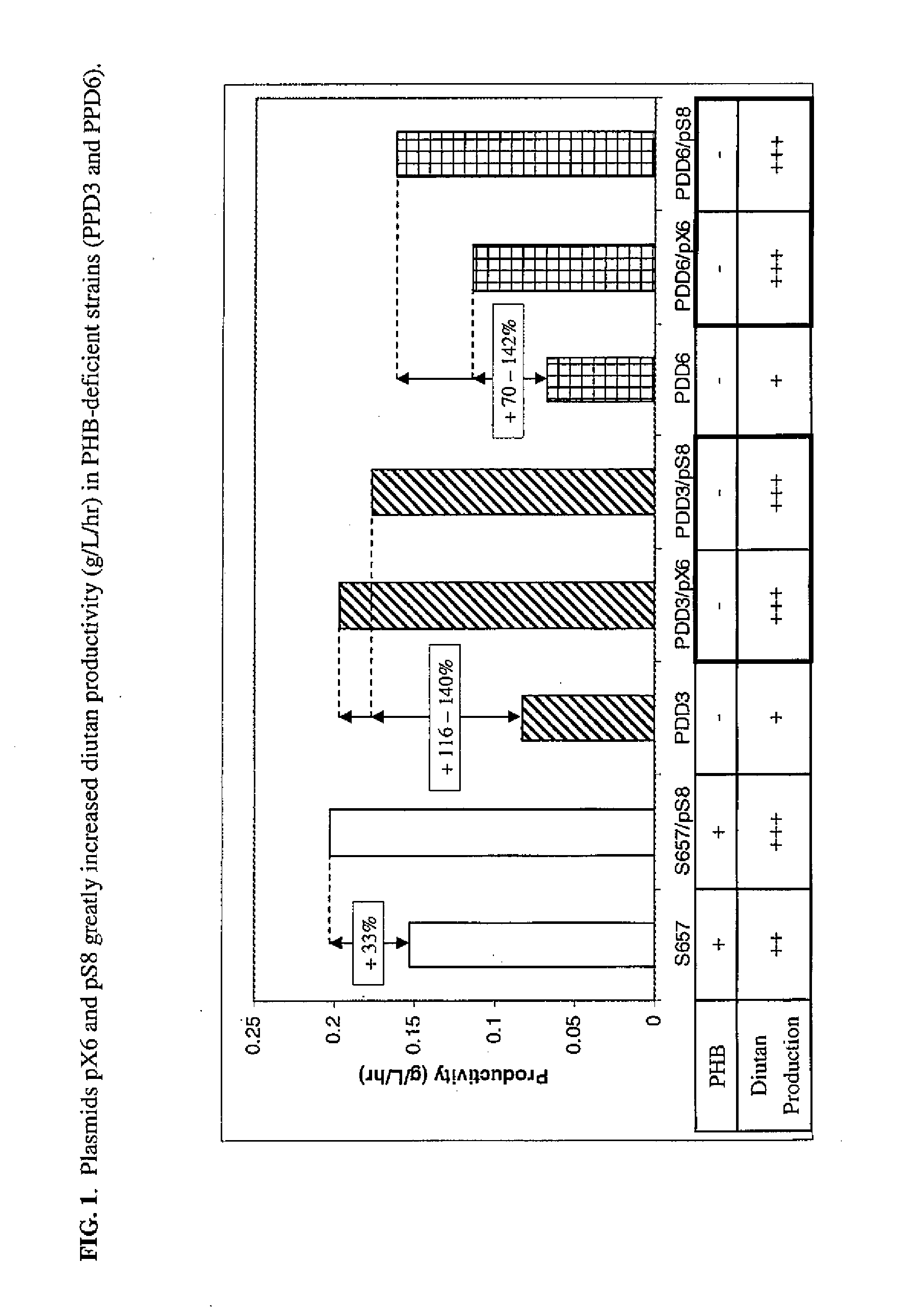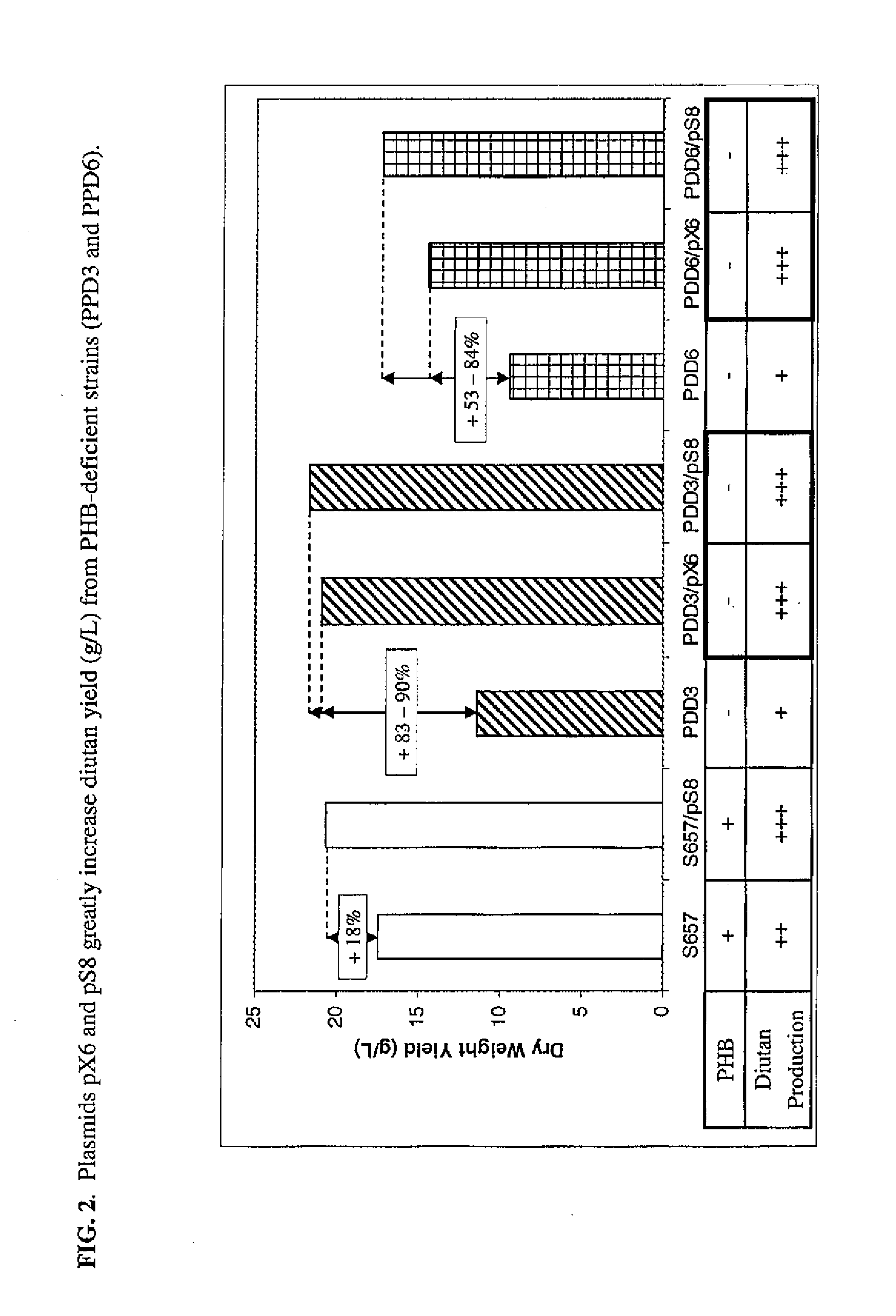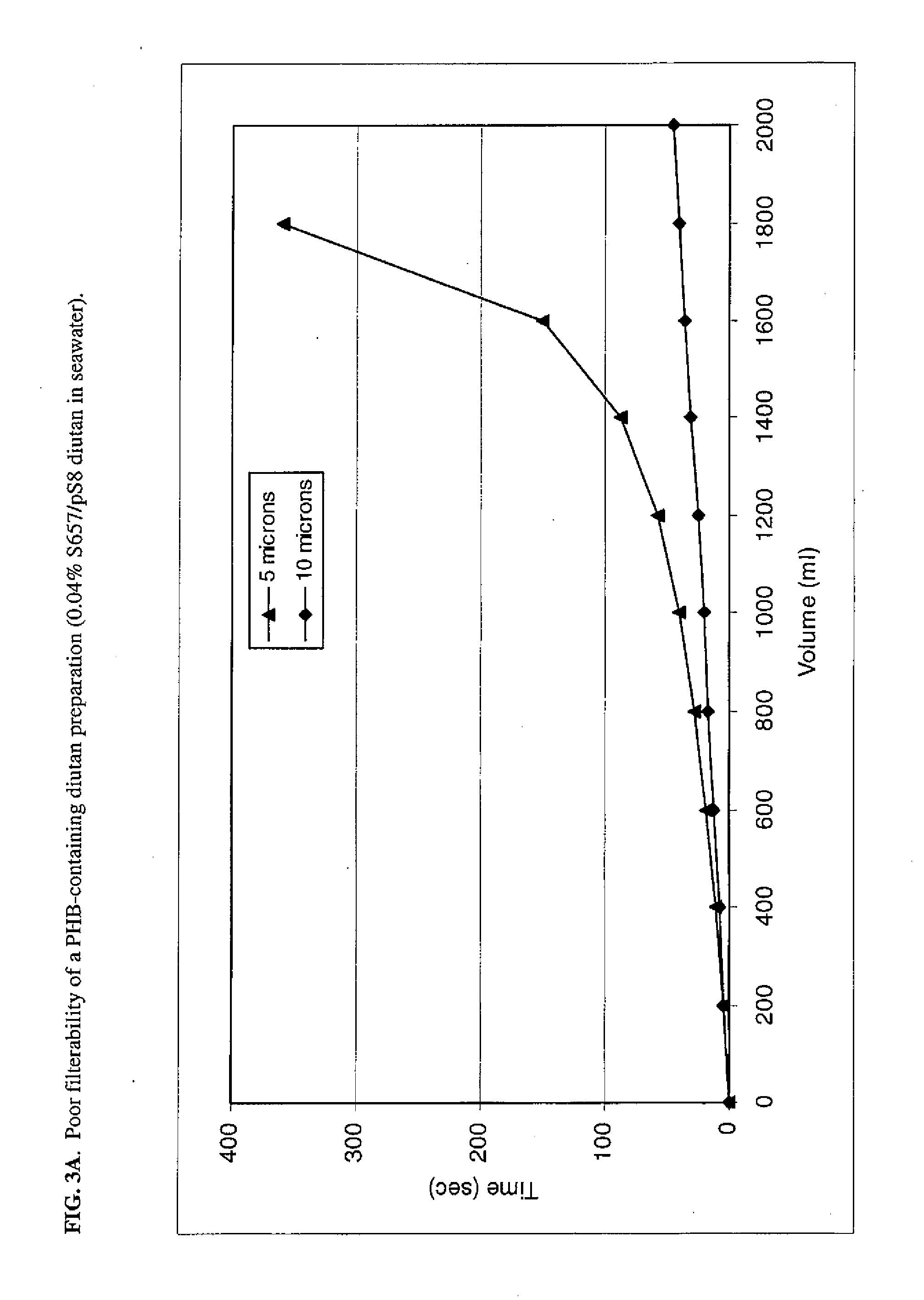Sphingomonas Strains Producing Greatly Increased Yield of PHB-Deficient Sphingan (Diutan)
a sphingan and phb-deficient technology, applied in the field of phb-deficient sphingan strain construction, can solve the problems of limiting the usefulness of sphingans, difficult removal, and turbidity imparted by phb particles
- Summary
- Abstract
- Description
- Claims
- Application Information
AI Technical Summary
Benefits of technology
Problems solved by technology
Method used
Image
Examples
example 1
Production of Diutan
[0056]This example described an increased yield of PHB-deficient diutan produced from several genetically modified Sphingomonas strains.
Methods
[0057]The plasmids pS8 and pX6 were transferred into PHB-deficient Sphingomonas strains PDD3 and PDD6 by triparental conjugal mating as described previously (ref. no. 3) and which is well known in the art. Strains PDD3, PDD6, S657, and S657 / pS8 are as described previously (ref. nos. 17, 18, and 20). Strains PDD3 / pS8, PDD6 / pS8, PDD3 / pX6, PDD6 / pX6, PDD3, PDD6, S657, and S657 / pS8 were grown in 15 L volumes in 20 L Applikon fermentors with agitation and aeration. For the plasmid containing strains, the antibiotic tetracycline at 5 mg / L was added throughout the fermentation to ensure retention of the plasmid. KOH was added as needed to control pH. Two seed stages were used with 1% to 6% inoculum transfers. The fermentation media contained corn syrup as carbohydrate source, an assimilable nitrogen source, and salts.
[0058]At the ...
example 2
Diutan Analysis
[0061]The diutan samples produced in the method of Example 1 were analyzed for uses as oilfield additives for oil recovery and for uses requiring good suspension and stabilization (such as for cement additives for water retention and quick set-up).
Methods
[0062]The oilfield industry relies on a “sea water viscosity” (SWV) test as an indicator of acceptable performance for rheology modifiers in oil recovery. This test indicates whether a rheology modifier can sufficiently increase viscosity in briny conditions of sea water, such as those encountered in seabed oil recovery. Typically, a sea water viscosity test employs synthetic seawater produced by mixing 419.53 grams of sea salt (ASTM D-1141-52) per 9800 grams of deionized water. For a seawater viscosity test, a rheology modifier is dispersed in synthetic seawater by vigorous mixing (e.g., 35 minutes at approximately 11,500 rpm in a Fann Multimixer (Model 9B5, part number N5020)). The sample is cooled to approximately ...
example 3
Low Acid Residue of PHB-Deficient Diutan
Methods
[0066]The indicated strains were grown in 1000 gallon fermentors and in multiple Applikon® fermentors to prepare larger samples for testing and analysis. After the fermentations had finaled, the broths were either left untreated or enzyme clarified using one of two methods.
[0067]The first method, clarification with a cellulase, CELLUCLAST™ (“Clarified”) was as follows: First, the broth temperature was adjusted to 50° C. Next, the pH was adjusted to between 5.0 and 5.4. CELLUCLAST™ enzyme (1 g / L) was then added, and the broth was incubated for two hours. Stock solutions of EDTA and Lysozyme in distilled water were then sequentially added to the broth to a final concentration of 0.25 g / L EDTA and 0.05 g / L Lysozyme, and the broth incubated for one hour. The pH was then adjusted to 8.0 to 8.5. Protex 6 L protease was then added to the broth at a final concentration of 0.5 g / L and the broth was incubated for two hours. Finally, the diutan gu...
PUM
| Property | Measurement | Unit |
|---|---|---|
| flow pressure | aaaaa | aaaaa |
| pore size | aaaaa | aaaaa |
| diameter | aaaaa | aaaaa |
Abstract
Description
Claims
Application Information
 Login to View More
Login to View More - R&D
- Intellectual Property
- Life Sciences
- Materials
- Tech Scout
- Unparalleled Data Quality
- Higher Quality Content
- 60% Fewer Hallucinations
Browse by: Latest US Patents, China's latest patents, Technical Efficacy Thesaurus, Application Domain, Technology Topic, Popular Technical Reports.
© 2025 PatSnap. All rights reserved.Legal|Privacy policy|Modern Slavery Act Transparency Statement|Sitemap|About US| Contact US: help@patsnap.com



